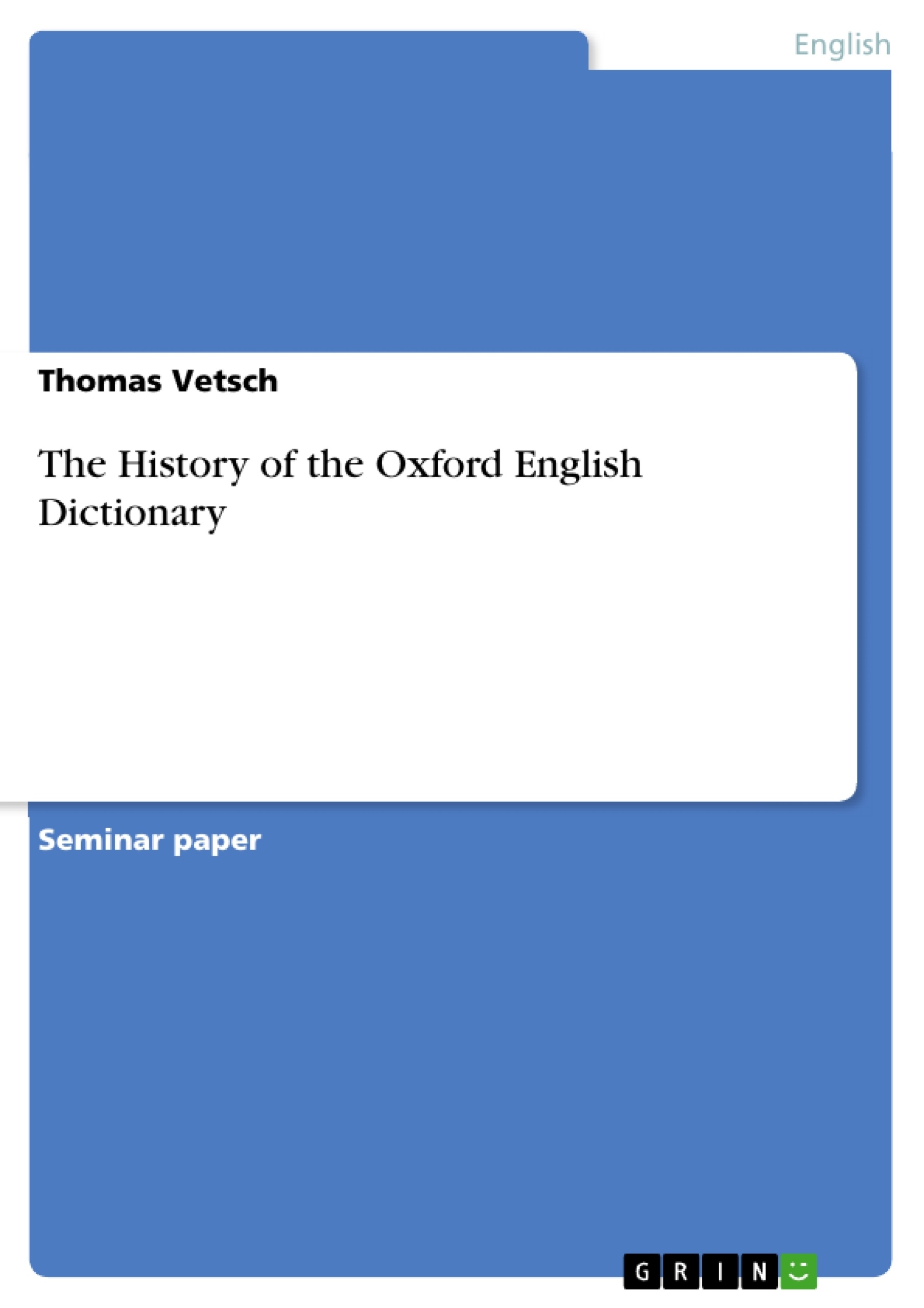The history of dictionaries certainly goes back to the 8th century, when the custom of
making collections of glosses grew up. These collections, called glossarium or glossary, were
a great help to students, as they were also a sort of dictionary. In the 10th century, Abbot
Ælfric produced a Latin grammar book, including a short Latin-English dictionary - the first
of its kind. In 1440 Galfridus Grammaticus produced the first English-Latin dictionary which
was printed in 1499 by Pynson and bore the title Promptorium parvulorum sive clericorum.
Until the 16th century, the emphasis of dictionaries lay on translating foreign words into
English. Apparently, there was no need for an English-English dictionary, i.e. a dictionary
which described English words to English people. In that time a lot of foreign words, mostly
Latin ones, made their way into ‘standard’ English, which at first caused no debate but then
was criticised by language purists. According to them English was in danger of being taken
over by foreign languages and needed special support. This idea was the beginning of
English-English dictionaries.
In 1604 Robert Cawdry brought out his Table Alphabetical. About three thousand ‘hard’
words which had become common in English were listed and explained. Henry Cockeram
produced the first work with the title The English Dictionary in 1623. Like other dictionaries
of that time, it primarily dealt with ‘difficult’ English words. A polyglot dictionary of eleven
languages was published in 1617 by John Minsheu. The Ductor in Linguas was the most
monumental dictionary in the 17th century and for the first time, etymology was given some
attention. In 1674 John Ray produced a dictionary which dealt with dialect words. It was an
unexpected success and people all over the country began looking for additional local terms
and sent them to Ray, who brought out a second and enlarged edition of this dictionary in
1691. John Ray can be regarded as the “remote originator of the English Dialect Society”
(Mathews 1966, p. 26).
Until then, dictionaries followed the line of old glossaries and only dealt with terms which
were not common or rather unusual in the English language. This changed in the 18th century
when the first attempts to publish dictionaries containing all English words were made. In
1702 John Kersey published A New English Dictionary; or, a complete collection of the most
proper and significant words, commonly used in the language... [...]
Table of Contents
- Introduction
- The history of the NED
- The making of the NED
- Searching for quotations
- Selection of word entries
- The ordering of entries
- The supplements
- Supplement I
- Supplement II
- The OED II
- The making of the Second Edition of the OED
- Differences between the NED and the OED II
- The OED III
- The electronic OED
- Summary
- The evolution of lexicography and the need for a comprehensive English dictionary.
- The challenges and innovations involved in compiling a historical dictionary.
- The role of the Philological Society and its contributions to the OED.
- The impact of the OED on the standardization and understanding of the English language.
- The transition from print to electronic formats and its implications for lexicography.
- Introduction: This chapter provides a brief overview of the history of dictionaries, highlighting key developments leading up to the creation of the NED. It discusses the shift from foreign language dictionaries to English-English dictionaries, emphasizing the increasing importance of documenting and standardizing the English language.
- The history of the NED: This chapter outlines the genesis of the NED, beginning with the Philological Society's initiative to create a supplement to existing dictionaries. It explores the contributions of key figures like Dr. Richard C. Trench, Herbert Coleridge, and Frederick J. Furnivall, highlighting their roles in shaping the dictionary's scope and purpose.
- The making of the NED: This chapter delves into the practical aspects of creating the NED, discussing the collection of quotations, the selection of word entries, and the principles guiding the organization of the dictionary. It examines the challenges and successes encountered during the dictionary's compilation.
Objectives and Key Themes
This text examines the history of the Oxford English Dictionary (OED), tracing its development from its origins as the New English Dictionary (NED) to its modern electronic form. It delves into the motivations behind its creation, the processes involved in its compilation, and the significant changes that have occurred over its lifespan.
Chapter Summaries
Keywords
This text focuses on the history and development of the Oxford English Dictionary (OED), encompassing key themes such as lexicography, historical linguistics, etymology, standardization of language, and the evolution of dictionaries from print to electronic formats. It also explores the contributions of the Philological Society, key figures involved in the OED's creation, and the challenges and innovations encountered throughout its compilation process.
- Quote paper
- Thomas Vetsch (Author), 2001, The History of the Oxford English Dictionary, Munich, GRIN Verlag, https://www.grin.com/document/17160



